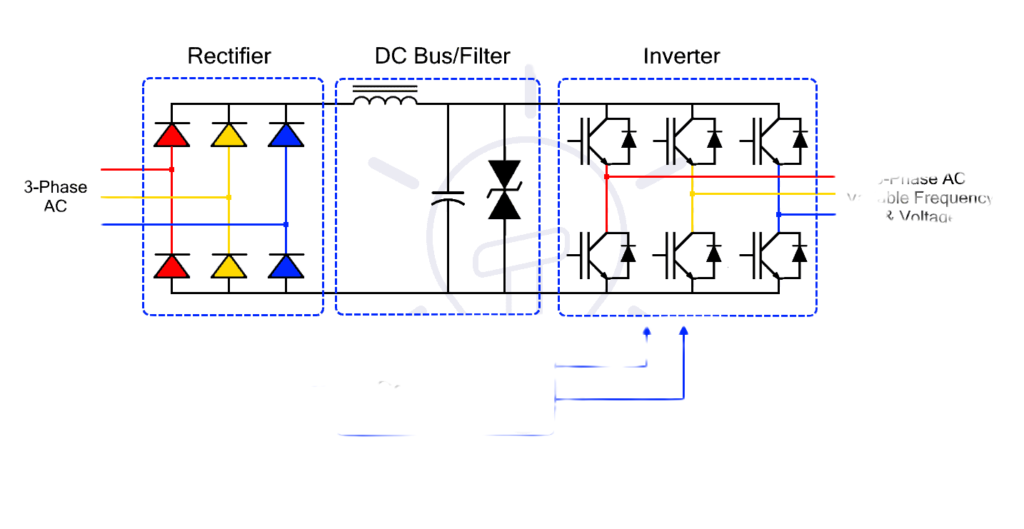A Variable Frequency Drive (VFD), also known as a Variable Speed Drive (VSD) or Adjustable Speed Drive (ASD), is a device used to control the speed and torque of an electric motor. It plays a vital role in modern industrial and commercial applications. This article provides a comprehensive overview of VFDs, including their working principle, applications, benefits, and technical specifications.

Working Principle of Variable Frequency Drives
Variable Frequency Drives operate by adjusting the frequency and voltage supplied to the motor, enabling precise speed control. They accomplish this by converting the incoming fixed-frequency AC power into a variable-frequency and variable-voltage output. This allows for accurate control over the motor’s rotational speed, resulting in efficient operation and energy savings.
Applications of Variable Frequency Drives
Variable Frequency Drives find extensive applications across various industries, including:
- Industrial Manufacturing: VFDs control motors in pumps, fans, conveyors, and other industrial machinery, enhancing efficiency.
- HVAC Systems: Variable Frequency Drives regulate motor speed in heating, ventilation, and air conditioning (HVAC) systems, improving energy efficiency.
- Water and Wastewater Treatment: VFDs are utilized in pumps and blowers for efficient water and wastewater treatment processes.
- Renewable Energy: Variable Frequency Drives play a crucial role in controlling motors in wind turbines and solar power systems.
Benefits of Variable Frequency Drives
Utilizing Variable Frequency Drives offers numerous benefits:
- Energy Savings: VFDs enable energy-efficient operation by adjusting motor speed according to the load, reducing energy consumption.
- Improved Process Control: VFDs provide precise speed control, ensuring better process control and higher product quality.
- Reduced Mechanical Stress: VFDs minimize mechanical stress and extend equipment lifespan by gradually ramping up the motor’s speed.
- Soft Starting and Stopping: VFDs ensure smooth starting and stopping of motors, eliminating sudden mechanical shocks.
Technical Specifications of Variable Frequency Drives
When selecting a Variable Frequency Drive, it is essential to consider the following technical specifications:
- Power Rating: VFDs are available in various power ratings to match the motor’s requirements.
- Input Voltage: The VFD should be compatible with the available input voltage in the application.
- Output Voltage and Frequency Range: The VFD should offer a suitable output voltage and frequency range for precise motor control.
- Control Methods: Different control methods, such as scalar control or vector control, provide varying levels of motor performance and accuracy.
- Protection Features: VFDs should have built-in protection against overvoltage, undervoltage, overload, and other electrical faults.
Conclusion
Variable Frequency Drives are indispensable devices in modern motor control applications. They offer precise speed control, energy savings, improved process control, and reduced mechanical stress. Their diverse applications across industries contribute to increased efficiency and sustainability. When selecting a VFD, considering the specific technical specifications that meet the motor’s requirements is crucial. Harnessing the benefits of Variable Frequency Drives can lead to enhanced productivity, reduced energy costs, and extended equipment lifespan.
 6G Controls - Leading Supplier of New & Original PLC 、DCS Parts and Automation Controller
6G Controls - Leading Supplier of New & Original PLC 、DCS Parts and Automation Controller
